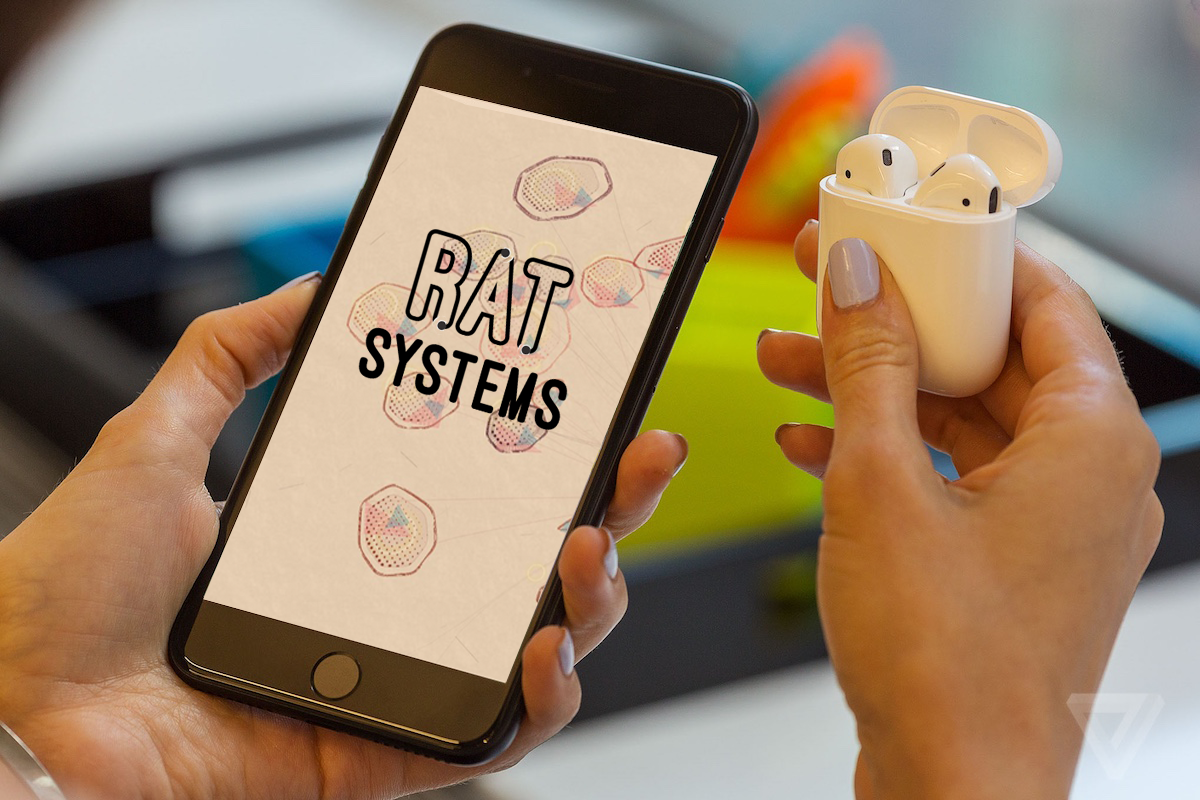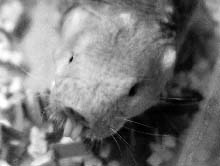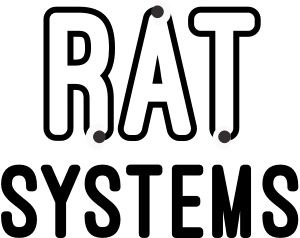Rodent Activity Transmissions* (RAT) systems uses real-time data to allow us a peek into the lives of a colony of naked mole-rats (Heterocephalus glaber).
Naked mole-rats are unique among mammals, with unusual features that result from extreme adaptations to living underground. They have become an important model system for healthy aging, they resist cancer, they are studied to help us understand how complex societies evolve and are maintained, and even for how social environment can affect fertility. Studying an animal with what is at first glance a bizarre lifestyle, can inform us about more general biological principles of wide importance to us and other species.
In addition to giving us a deeper understanding of animal behaviour through real-time tracking and data collection, we are exploring the naked mole-rat data through visualisation, sound, animation, and kinetic sculpture.
*RAT also stands for Research in Art & Technology, a nod to iRAT founded in London, 1969.
Photography by Lorna Ellen Faulkes, commissioned by Julie Freeman and Dr. Chris Faulkes.
The animals eyes are blocked out for privacy reasons. See below.
Colony Omega
Last update: September 2020
From 2016 to 2020 we tracked Colony Omega in real-time - a colony of naked mole-rats maintained in an artificial environment designed for behavioural observation; there is no experimentation conducted on these animals. The colony includes three pups born in February 2016. Since September 2020, and after collecting over 30 million data points, the data has been archived and the animations on this site are derived from past 'recycled' data.
What's the gender distribution?
50% male
vs
50% female
Fairly equal, a recent litter of pups contained all males.
What is the age range?
The youngest is less than 12 months, the eldest is over 21 years old! Numbers above are in years. Blue dots represent females, black dots are males.
How do the generations evolve?
As far as we know, the record litter for a naked mole-rat colony is 27 pups! This graph shows the colony growth over time. Breeding began in 2006 when a Queen was introduced to a new community.
Which are the most active animals?
This plot shows activity over the past 24 hour period. Activity is based on how frequently animals pass the sensors around the burrow.
Most popular paths
This diagram shows which routes in the burrow are taken most often. For instance if route 4 to 5 is the thickest we know that the animals are visiting the toilet a lot!
Do individuals have a regular route?
These "heat" maps show the last 24 hours of activity for each animal. Where the lines are darkest it shows where that animal hangs out most often. The patterns are different as members of the community have different roles, some maybe defending a certain area. The queen is marked orange, males are black and females blue.
Live observation
Last update: September 2020
This visualisation shows the position of each naked mole-rat in their nest. You can use the slider to scroll through past data and see where individuals like to go.
Each animal has a tag (a passive integrated transponder) implanted under it’s skin, the type vet’s put in dogs and cats but smaller. A series of sensors placed around the burrow detect when a tagged animal is close by. We log the tag ID, sensor ID, and exact time data on a server where we can retrieve it to calculate new data (such as speed) and create live animation.
Current naked mole-rat positions at
This is a live data representation of the colony (updated every 5 min). The last known position of each animal is represented by a circle. The burrow we've drawn here is simplified, the real one is made of clear tubes with feeding, toilet and sleeping chambers.

About naked mole-rats
Naked mole-rats are subterranean and are found in the arid regions of Kenya, Ethiopia and Somalia. Our colonies are the descendants of Kenyan animals originally caught by Professor Jenny Jarvis (University of Cape Town) and captive bred, first in Cape Town, then in London.
Naked mole-rats may live to 32 years; this is approximately nine times longer than a similarly sized mouse and five times longer than predicted for their body size. Moreover, they resist the usual signs of ageing until very old. The discovery of their longevity has led to naked mole-rats emerging as a unique organism to study ageing and human health. A long lifespan and overlapping generations also help to underpin their cooperative eusocial lifestyle. Breeding females can reproduce well into old age, indeed one female is known to have reared more than 900 offspring in her 24-year lifespan.
Like rabbits, and some other rodents, Naked mole-rats may eat their own or other colony members’ poo (coprophagy). This unpalatable act is very important for health and wellbeing, providing extra nutrients and the transfer of beneficial symbiotic microbes – rather like a probiotic yogurt. Their usual diet consists of tubers, like sweet potatoes. Much nicer.
Potentially, yes! One aspect of naked mole-rats negligible senescence is a resistance to cancer, which is thought to be due to the production of a substance responsible for their stretchy skin, which in turn is an adaptation to living underground in tight tunnels. Research into this cancer resistance is giving scientists new insights into the pathways leading to tumor formation, and may one day produce new treatments.
Naked mole-rats run forwards and backwards with equal speed – this is very unusual for a mammal. Understanding their backwards gait may have applications in robotics.
Being eusocial means living in a cooperative society. Naked mole-rats are the mammalian equivalent of eusocial insects like bees and termites. Groups commonly contain 100, but up to 300 have been recorded. At the top of the hierarchy is a dominant breeding queen who mates with 1-3 breeding males. The rest of the colony do not reproduce but “work” (small animals do more) or “defend” (larger animals). Their roles change as they grow.
The queen behaviourally harasses the non-breeders and the “stress” shuts down their reproductive systems, so both sexes of “adult” animals are held in a state of pre-puberty.
It was their eusociality that first drew the interest of scientists, who sought to understand the costs and benefits to this extreme social and cooperative behaviour – why sacrifice your own reproduction to help others breed? Some of the answers lie in “kin selection theory” – by helping close relatives to successfully reproduce, you indirectly pass on some of your own genes (inclusive fitness).
Their natural and extreme socially-induced suppression of fertility is of great interest, because stress is a major cause of infertility in many animals, including humans, and the mechanisms are likely to be common to all.
“If you play the Game of Thrones, you win or you die…” will be a phrase familiar to many, and one that applies to naked mole-rat society. The Queen is the most dominant individual within the colony and often achieves her position by fighting with and killing rivals. Once “on the throne” she can never revert to a non-breeder and must hold her position by asserting her authority – or be deposed.
Because establishing new colonies is risky and difficult, naked mole-rats may sometimes be forced to breed with close relatives (ewww!). It is thought that harmful recessive genes, which can lead to physical and mental issues, may have been purged from populations following several cycles of such facultative (or circumstantial) inbreeding.
Specific “disperser males” with a particular body shape, physiology and behaviour have been discovered which move to other colonies to spread their own genes, and to offset the effects of any inbreeding.
Naked mole-rats have a very low body temperature for a mammal (at 32˚C) and a low basal metabolic rate (30% lower than predicted by body size). They have lost the typical mammalian “warm-bloodedness” or endothermy – they are effectively cold-blooded, or ectothermic; they have no subcutaneous fat layer, no sweat glands and do not shiver to generate body heat when cold. Together with the naked skin, these characteristics enable them to gain and lose heat quickly and behaviourally thermoregulate in their burrow, where temperatures are quite constant – they have a “high thermal conductance”. A secondary benefit is that with a lack of fur, external parasites are discouraged. These reduced energy requirements are useful in an environment where the food supply may be unpredictable.
About RAT.systems
We are experimenting with the many ways that scientific data can be used in art and science. This project aims to collect a valuable body of behavioural data that can help us understand more about the naked mole-rat, and more about how we absorb data in different formats.
Download the app!

A naked mole-rat colony in your pocket! Download the app to monitor Colony Omega at any time. The app features the artwork, gallery and data visualisation. And it's free.
A Selfless Society (2016)
Online audio-visual artwork
A Selfless Society is an abstract animation influenced by live data from the naked mole-rat colony. Creating work with real-time, live data from living systems can stimulate unexpected connections to nature. The animals bring their own unpredictably to the artwork which cannot be anticipated or synthesised. As we observe the colony’s activity patterns we are invited to consider new social models for family and society. We may question whether we, like naked mole-rats, could became eusocial. How would this alter our expectations of own gender identities, actions or motivations?
This is Nature Now (2016)
Soft robotic kinetic sculpture

This is Nature Now is a sculptural work that explores the "body language of objects". It uses soft robotic techniques to represent live data from Colony Omega through the physical movements of an artificial material. The work asks us to reflect on how technology mediates our experience of the natural world, and how we now encounter nature through our devices and broadcast mechanisms. Can living things be represented through data? And if so, what are the traits a non-biological object requires to convey this sense of life?
This is Nature Now was first exhibited at the Utopia Treasury at Somerset House, London, as part of A Naked Mole Rat Eutopia in October 2016.
Colony Omega Redacted Portraits
The portrait gallery of Colony Omega, photographed by Lorna Ellen Faulkes, is displayed in the exhibition with each animal's eyes blocked out (or redacted). This highlights the need for us to question data privacy and the rights of the animals we are tracking and observing, particulary animals in the wild. An example of the importance of this is seen in safari tours where tourists posting photographs of endangered animals which can help poachers to find their prey through the location metadata. Even academic articles which describe newly discovered species, can help illegal collectors poach rare animals and plants.
On-going work
The data collected as part of this project is a unique data set that will allow Dr. Faulkes and other biologists to explore patterns in the animal behaviours. We hope to discover more about the colony's circadian (daily) rhythms, as they normally live in total darkness away from the usual light cues used by other animals, including humans. We also hope to find out more about how the community splits into roles, when or if these roles change, and how changes in the environment (light and noise) affect their behaviours. The behavioural experiments will continue over the coming years.
Exhibitions
• Utopia Treasury, Somerset House, London, UK. Oct 2016
• Technology is not Neutral, Phoenix Brighton, UK. 2-24 Sept 2016
• Technology is not Neutral, Watermans, UK. 4 Nov 2016 – 8 Jan 2017
• New Scientist Live, London, UK. 28 Sept – 1 Oct 2017
• The New Observatory at FACT, Liverpool, UK. June 2017 – October 2017
• Royal Society Summer Science Exhibition, London, UK. 6 July 2018
• SIGGRAPH Digital Power: Activism, Advocacy and the Influence of Women Online. USA. August 2020 - ongoing
Contact Us
RAT.systems has been featured in many conferences and festivals around the world. Please contact Julie Freeman via email: julie AT translatingnature DOT org to have us talk at your event, host a naked mole-rat life-drawing workshop, or exhibit the works.
More Information
Videos, Photos and Awards
-

Short Film
Watch the short film about the people who created RAT.systems and our New Scientist Live exhibit
Watch video → -

Artwork Gallery
Check out the amazing artwork from our naked mole-rat life drawing classes!
See gallery → -

Awards
Winner of the Inspire Public Engagement Award from Queen Mary University of London (2018)
Watch video → -

More Awards!
Shortlisted for an Information is Beautiful Award (2017) & Longlisted for the Lumen Prize (2017)
See IoB Entry → -

PhD thesis
Download and read Dr Julie Freeman's PhD thesis on Defineing Data as an Art Material which features detailed information about RAT.systems and how it was conceptualised and designed.
Download thesis → -

What can we learn from naked mole rats and eusocial living?
The Guardian's Tech Podcast on Colony Omega and RAT.systems
Listen to podcast → -

Data as an Art Material
Paper: A Concise Taxonomy for Describing Data as an Art Material
Read PDF → -

How To Translate Nature into Data
Julie Freeman speaking at Thinking Digital on RAT.systems
Watch video →
Team
RAT.systems is led by Julie Freeman with Dr. Chris Faulkes and the team. It is supported by the Centre for Public Engagement at Queen Mary University of London and Arts Council England.
With special thanks to Prof. Mark Sandler, Prof. Geraint Wiggins, and Prof. Kaspar Althoefer. Additional thanks to Hannah Redler, the Utopia crew: Grace Perrett and Karishma Rafferty at Somerset House, Tony Bailey, Helge Wurdemann and Lukas Lindenroth (for soft robotics inspiration), Yodit at OpenSensors.io, Stephen Wolff, the Open Data Institute, and staff and students at the Media & Arts Technology DTC at QMUL.
-

Dr. Julie Freeman
Artist & Computer Scientist, PhD in Media & Arts Technology, QMUL
translatingnature.org -

Dr. Chris Faulkes
Reader in Evolutionary Ecology at QMUL and international expert on naked mole-rats.
sbcs.qmul.ac.uk -

Colony Omega
24 naked mole-rats
RAT.systems -

Marcin Ignac
Data artist and computational designer
variable.io -

Sonia Blair
Artist
soniablair.com -

Matt Jarvis
Creative technologist
mattjarvis.co.uk -

Lorna Ellen Faulkes
Wildlife photographer
lornaellen...com -

Henryk Wollik
Data visualiser
variable.io
Further Resources
Articles and related content about naked mole-rats
-

There’s no such thing as a truly selfess act
BBC
Read article → -

TED-ed animation
Are naked mole rats the strangest mammals?
Watch animation → -

The Naked mole-rat Genome Resource
Providing databases and tools for the study of Heterocephalus glaber
See website → -

Why do mole-rats live so long?
Video featuring burrows in the lab where Colony Omega are housed
Watch video →
With support from:









